hey my name is dylan and i'm learning japanese. this is a blog on my language journey, fun things about the language, and perhaps annoying things about the language.
Don't wanna be here? Send us removal request.
Text
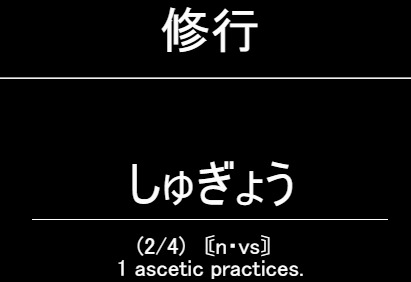
Brother in Buddha I didn't even know what this meant in English. Basically practices that relinquishes worldly desires.
108 notes
·
View notes
Text
It can also sometimes be テイ as in 体裁(ていさい)
体
音読み おんよみ タイ、
訓読み くんよみ からだ
英語 えいご ① body, substance, object, reality; ② counter for images
何よりも、お体を大切に。 なに より も、おからだ を たいせつ に。 Above all, take care of yourself.
48 notes
·
View notes
Text
About how to say "to try" in Japanese
In English, the verb "to try" can have different connotations depending on the context. Among its various meanings are the following:
Experimenting or testing something: this implies attempting to do something to see what happens, often with an open mind and no guarantee of success. For example, "I'll try this new recipe" suggests that you're testing out the recipe, perhaps for the first time, to see how it turns out.
Attempting with effort: this implies making an effort to accomplish something, even if the outcome is uncertain. For example, "I'll try to finish this project by tomorrow" suggests that you're putting in effort with the hope of succeeding, but there's a possibility you might not.
In Japanese, these nuances of "to try" are expressed using different grammatical forms:
1. ~てみる (te miru) This form is used when you want to "try" something in the sense of experimenting, testing, or doing something for the first time to see the result. You use ~てみる when you're not sure about the outcome and want to see what happens, often in a casual or exploratory sense. For example, you use it when trying a new food or testing a new activity: 初めて寿司を食べてみる (hajimete sushi o tabete miru) - I'll try eating sushi for the first time; テニスをしてみる (tenisu o shite miru) - I'll try playing tennis.
2. ~ようとする (yō to suru) This form is used when you're making an effort to do something, with the understanding that the result is uncertain or difficult to achieve. You use ~ようとする when you're expressing your intention to make an effort, especially in situations where success is not guaranteed. For example, you use it when you're attempting something challenging or you're making an effort with uncertain results: 明日早く起きようとする (ashita hayaku okiyou to suru) - I'll try to wake up early tomorrow; 宿題を時間通りに終わらせようとする (shukudai o jikan dōri ni owaraseyou to suru) - I'll try to finish my homework on time.
In the ~てみる (te miru) form, the use of 見る (miru), meaning "to see," suggests that the speaker is metaphorically "seeing what happens" by performing the action. It implies a lower level of commitment to a specific outcome; the action is undertaken with curiosity or a desire to experience something new. The result is not the primary focus; rather, the process of doing or experiencing something is emphasized. In contrast, the ~ようとする (yō to suru) form uses the volitional form よう (yō) to signal a strong intention or will to carry out the action, and する (suru), meaning "to do," emphasizes the attempt. This form conveys a higher level of personal involvement and responsibility, focusing on the effort required to reach a desired goal. While the outcome is uncertain, the focus is on the attempt itself, with an underlying hope or expectation that the effort might lead to success.
In conclusion, we can say that in English "to try" is a verb that must rely on context or additional modifiers to convey whether the action is exploratory or effortful. On the other hand, Japanese uses separate constructions to encode these nuances directly within the verb forms, reflecting a more fine-grained linguistic approach to expressing different types of attempts.
294 notes
·
View notes
Text


I ended up not doing Anki yesterday because I was so lazy so I lost my streak. So my reviews piled up and I ended up spending like 15 more minutes than I needed to.
3 notes
·
View notes
Text

Brother in Buddha I didn't even know what this meant in English. Basically practices that relinquishes worldly desires.
108 notes
·
View notes
Text
Current words that are the bane of my existence is:
追う おう
培う つちかう
拾う ひろう
誓う ちかう
覆う おおう
This has mainly been a toss-up between 培う and 拾う and 追う looking somewhat similar. The first two being the worst. And I'm just forgetful on the last two. I need these cards matured for my sanity.
15 notes
·
View notes
Text

In celebration of my potentially going swimming today, a water name! The surname 濵渦 is read Hamauzu.
The first character is actually an archaic variant only used in proper nouns; the standard character to remember is 浜. It means beach, seashore, or seacoast. It's read はま or ヒン. The radicals are 氵 water and 兵 soldier, which itself is made up of 斤 axe and 八 eight.
浜 has two variants: 濵 and 濱, both with the same readings. There are about 1000 Hamauzus who write their name with 浜, and 170 with 濱, while 濵 is uncommon enough that data is not available. Could even be just this family!
The second character, 渦, means whirlpool, eddy, or vortex. It's read うず (as in 渦巻 [うずまき] whirlpool or maelstrom) or カ.
21 notes
·
View notes
Text
I believe I have Review Heatmap on Anki, your stats do look a little different from mine but man at least 90 days is sick good job.

Anki progress if you care
50 notes
·
View notes
Text
Not at my computer currently but I have the Review Heatmap like @seherstudies said!

Anki progress if you care
50 notes
·
View notes
Text

Anki progress if you care
#i know you dont#and i kind of do#日本語#japanese#japanese langblr#language learning#japanese learning#langblr#日本#anki
50 notes
·
View notes
Text

Today, a name I'd never seen before! 宍戸 is usually read Shishido (but potentially Shishito, Shindo, or Shijito). There are about 28,100 people with this name in Japan.
宍 means muscles or meat. It's read しし, ニク, or ジク. Its radicals are 宀 roof and 六 six. It's somewhat uncommon, but can be used in newspapers without furigana.
肉, the more common kanji for muscles/meat, 肉, shares the readings しし and ニク. Its radicals are 冂 the upside-down box and 人 person ×2.
戸 means door, and it's also a counter for houses. It's read と or コ. The radicals are 一 one and 尸 flag/corpse.
Coincidentally, it is also not really used when talking about doors. That would be ドア, generally, unless you're talking about traditional Japanese architecture doors, in which case it's 扉. That's read とびら or ヒ. The 非 radical underneath means un-, non-, or negative.
27 notes
·
View notes
Text
Why do i-adjectives and na-adjectives conjugate so differently?
In Japanese, adjectives are categorized into two main types: i-adjectives and na-adjectives. These two types differ in their forms and the way they conjugate.
I-adjectives end with the syllable "い" (i) in their base form and they can directly modify nouns without needing any additional particles. This is how they conjugate:
Base Form: 高い (takai) - "high" or "expensive"
Negative: 高くない (takakunai) - "not high" or "not expensive"
Past: 高かった (takakatta) - "was high" or "was expensive"
Past Negative: 高くなかった (takakunakatta) - "was not high" or "was not expensive"
Na-adjectives usually end with a consonant followed by a vowel other than "い" in their base form. When directly modifying a noun, they must be followed by the particle "な" (na). They do not conjugate in the same way as i-adjectives; instead, their conjugation often involves the copula "です" (desu) or "だ" (da). This is how they conjugate:
Base Form: きれい (kirei) - "beautiful" or "clean"
Negative: きれいではない (kirei dewa nai) / きれいじゃない (kirei ja nai) - "not beautiful" or "not clean"
Past: きれいでした (kirei deshita) - "was beautiful" or "was clean"
Past Negative: きれいではなかった (kirei dewa nakatta) / きれいじゃなかった (kirei ja nakatta) - "was not beautiful" or "was not clean"
The differences between i-adjectives and na-adjectives in Japanese stem from their historical and linguistic origins. I-adjectives are part of the native Japanese vocabulary, known as "和語" (wago), and their conjugation pattern can be traced back to classical Japanese. In contrast, many na-adjectives originated from Chinese loanwords (known as "漢語" or kango) and nouns. When Chinese words entered Japanese, they often carried descriptive qualities but did not fit neatly into the existing adjective conjugation system. As a result, they were adapted in a way that treated them more like nouns that required a particle ("な") to function adjectivally. Na-adjectives can be considered "nominal adjectives" because they behave similarly to nouns. They need the copula "です" or "だ" to form predicates, and they use "な" to modify nouns, indicating their grammatical status is closer to nouns than to i-adjectives.
In conclusion, the distinction between i-adjectives and na-adjectives in Japanese is rooted in historical and logical reasons: this division not only reflects the historical integration of foreign elements into Japanese but also maintains a logical grammatical structure that differentiates between native and adapted forms.
324 notes
·
View notes
Text
Nagasaki Infodump
I’m being emotional over the city of Nagasaki because I love it
Whenever I see Nagasaki I reblog it. Whenever I see a chance I post my pictures of Nagasaki.
I bet you’re thinking “oh the atomic bomb city”. I can't blame you guys. I mean when I see the name Srebrenica I think about the massacre, not the town before or after it. I was thinking “the atomic bomb city” before I visited there.
But there is a lot more. It was and is known for its high Christian population which people maintained during the nationwide ban on the religion which lasted more than 200 years. It is a city with a lot of slopes. The iconic view attracts the tourists, while elderly locals remember that it was the hills which protected some of the city from fatal heat waves on a summer day in the year 1945.
It was a city before the tragedy, which emphasize the terror of the event. It once again became a city after the tragedy, which emphasize the indomitableness of human being.
And I see a chance so here is my Nagasaki pictures
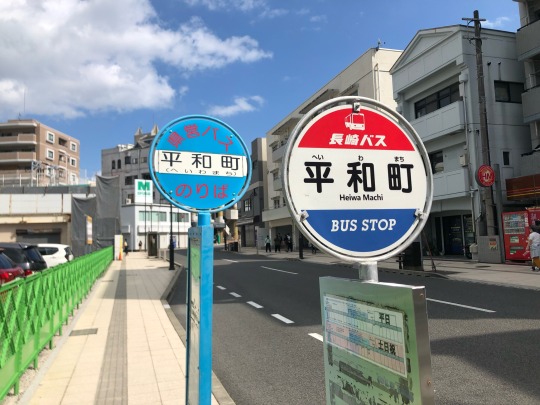
Bus stop signs that reads “Heiwamachi/Peace Town”, an area near the Ground Zero renamed in memory of the victims.

Bulletin board at a church calling for prayers for Ukraine, saying “Let’s pray for Ukraine” with Mark 15:34 quoted. When the bomb exploded, there was a mass held in this church which stood very near from the Ground Zero. None of the attenders survived.
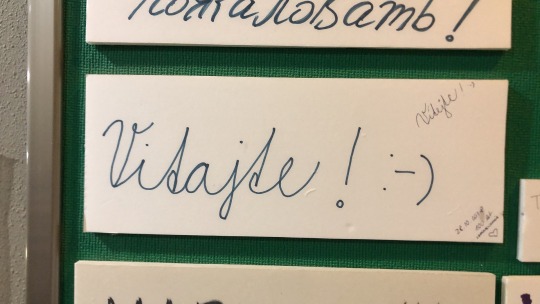
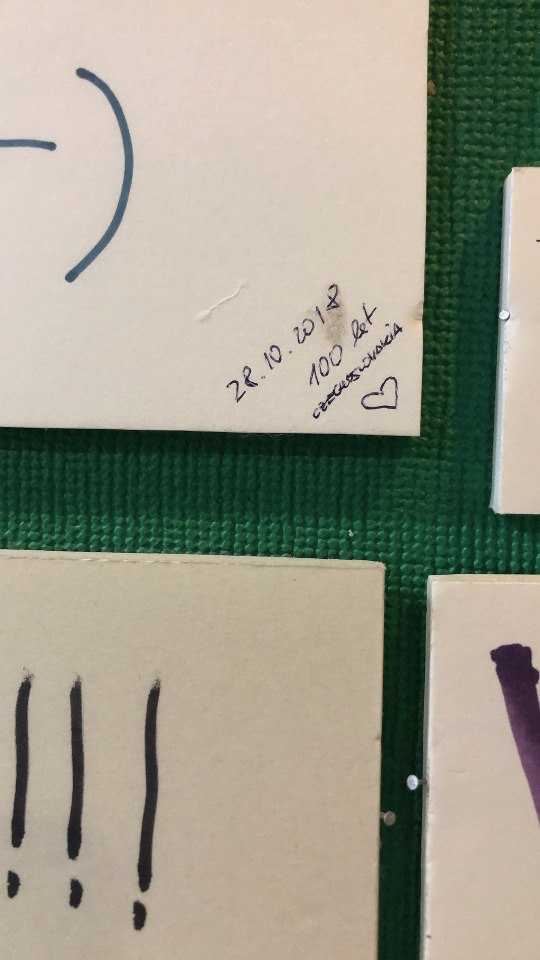
Hele ho. Spotted at a local museum.

A statue gifted by ČSSR to the city of Nagasaki.
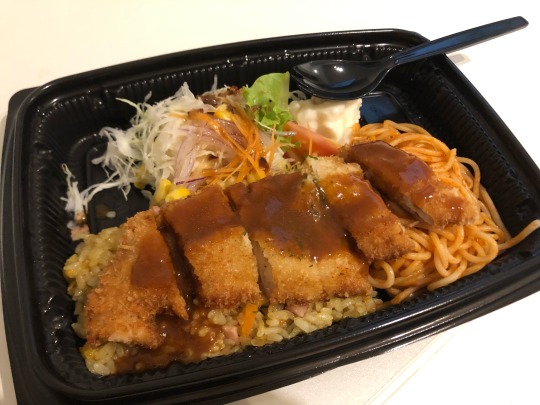
Local food called Toruko Raisu (“Turkey Rice”)

sushi time
⚠️the next caption involves a memorandum of a victim (no explicit description of dead people etc)

“I felt thirsty so badly. On the water there were oil-like things covering the surface. I desperately craved some water, and finally drank it with the oil on it. — a girl’s memorandum from the day”. Many survivors said that they felt extremely thirsty and that they watched vainly as people died craving for water. In the city there are cups filled with water devoted to the victim seen even today.
376 notes
·
View notes
Text

Some VERY interesting character design at a Nepalese restaurant! The text on the left clearly says 東京 Tōkyō, but in a stylized way inspired by Nepalese script. Neat.
Then, on the right, there are two lines of text. The tiny bottom text, which reads 本場ネパール家庭料理 【ほんば ねぱーる かてい りょうり】, or Authentic Nepalese Home Cooking. The top line, I assumed, was actually in Nepalese, and was either the restaurant name or a translation of the bottom line. But then I looked closer!
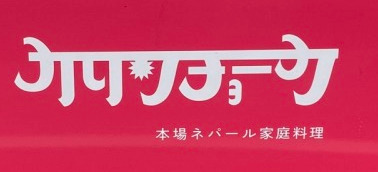
Look to the right of the middle, at the tiny little 3....... or maybe it's more of a Russian Э. Could that actually be a katakana ヨ? And then, if you squint a little......
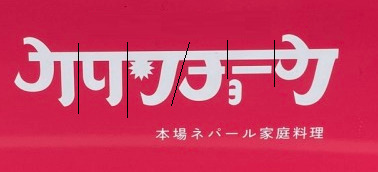
Can you see it? Is it just me? Let's try something.............
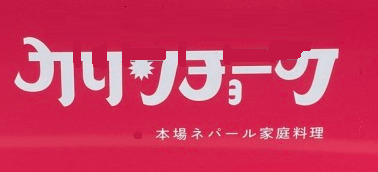
I was never good at those Magic Eye pictures, but this must be what that feels like. Amazing! The restaurant is called 東京カリンチョーク, and if their food is half as interesting as this design, I am excited to eat there.
Unfortunately, I couldn't find how they're romanizing カリンチョーク and don't know what it means. It seems that they've just recently changed names so maybe they'll update their online presence soon, but in the meantime, please chime in if you do know!
180 notes
·
View notes
Text
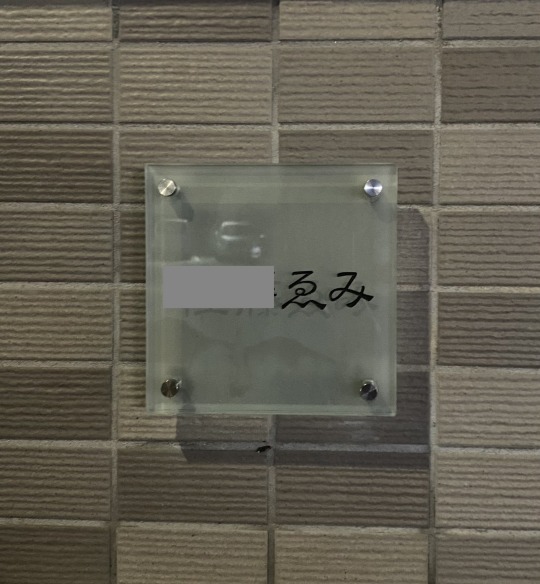
Have we ever done a first name before? Or a hiragana name? ゑみ is functionally read Emi, but technically, it's really Wemi because it uses the mostly obsolete kana character ゑ we.
In modern Japanese, the W sound can only be combined with the vowels A or O, but this wasn't always the case. There used to be characters like ゑ we (katakana: ヱ) and ゐ wi (ヰ) that have fallen out of popular use but still appear sometimes, which is always VERY exciting for me. If you want to type them on a Japanese keyboard, enter 'wye' or 'wyi,' respectively.
And since this is ostensibly a kanji blog, remember that ゑ is derived from the kanji 惠, meaning blessing, grace, favor, kindness, etc. Which today is read megu.mu, megu.mi, kei, or ei.
460 notes
·
View notes
Text
Playing visual novels to learn Japanese is painful. Playing Fun visual novels in Japanese is rewarding. I put myself through an incredibly boring visual novel for the sake of learning Japanese and it was just not ideal.
While I actually did learn a lot, I have no happy memories doing so, and the only reason I retained any knowledge was from the immersion and Anki memorization of it all. Words I have memorized that I find "useless":
敵前逃亡 、てきぜんとうぼう "Desertation before your enemy" (in battle)
浮力 ふりょく buoyancy
斥力 せきりょく repulsion (as a force)
I don't find these words actually useless. I think learning any and every word is useful, but learning these words and being able to read them was more fun than the entire visual novel (I didn't finish it).
However, I have started playing Steins;Gate and it is pretty difficult to get through because of words I have now accidentally (through nonstop immersion) learned:
相対性理論 そうたいせいりろん theory of relativity
無呼吸 むこきゅう sleep apnea
謎 なぞ riddle/puzzle (used in context of a mysterious circumstance)
現象 げんしょう Phenomenon
放電 ほうでん Electric discharge
組織 そしき an organization
施設 しせつ An instituion
談話室 だんわしつ A lounge
永遠 えいえん Eternity
観察 かんさつ Observation
結論 けつろん Conclusion (Academically or argumentatively speaking, not to be confused with:)
完結 かんけつ Conclusion/to conclude
Best way to differentiation the last two is the 論 being included in 理論 (a theory), denoting a more scientific approach to concluding something
Some of these words I see so much that I've committed them to memory without Anki, like 相対性理論, and there's other words that I have been utterly unable to memorize like 冷蔵庫 (れいぞうこ/Fridge).
I recommend playing Steins;Gate, it's been a ton of fun playing it. It'd be impossible in my case without a texthooker though.
11 notes
·
View notes
Text
Any video recs on the に限る grammar? I still struggle when coming across it 😔
JLPT Journal 26/07 (Countdown: 128 days)
Today I:
Watched grammar videos about 〜に限る and various conjunctions
Wrote some sample sentences using recently-learned grammar and vocab
Comprehensible input ~25 minutes
Reviewed 69 kanji
N3 vocab from today:
予防(よぼう)prevention, protection (against), precaution
影響(えいきょう)influence, impact, effect
従って(したがって)therefore, consequently, accordingly
しかも moreover, furthermore; nevertheless, and yet
其処で(そこで)so, accordingly, now, then, thereupon, therefore (usually written in kana)
更に(さらに)furthermore, again, after all, more and more, moreover, even more
所が(ところが)even so, however, even though, nevertheless, on the contrary, as a matter of fact, despite
なぜなら because, the reason is, if you want to know why…
わがまま selfish, egoist
Thoughts
I left it too late in the evening and now I am no longer experiencing thoughts. Time to go to bed.
26 notes
·
View notes